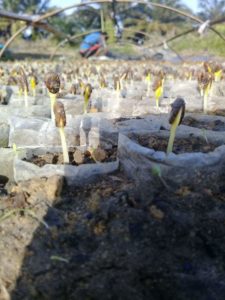Compost is a type of organic fertilizers made of decomposed remnants of plants or manure with the help of living organisms. To make it, you’ll need ingredients such as organic material and decomposer organism, be it microorganism or macroorganism.
Composting technology was developed from the organic material decomposing process that happens in nature, for example the forming of humus in forests. The process happens very slowly—it could take months or even years. Humans then modified the process so it happens faster and more efficiently.

You can classify composts based on three aspects. First, based on the forming process, there are aerobic and anaerobic composts. Second, based on the decomposers, you have composts from microorganisms and macroorganisms. Third, based on the form, there are solid and liquid composts. Here are some of them:
- Aerobic Compost Fertilizer
This one is made through biochemical process involving oxygen. The main ingredient for this compost is plant remnants, manure, or a mix of both. This process takes up to 40 – 50 days.
- Bokashi Fertilizer
Bokashi fertilizer is one of the most known types of anaerobic fertilizers. Its unique characteristic lays on their inoculant that is used as a starter, microorganism effective (EM4). This inoculant is made of a mix of chosen microorganisms that can decompose organic material quickly and effectively.
- Vermicompost
It’s a type of compost that takes advantage of macroorganism as decomposer. The macroorganisms in use are Lumbricus earthworms, as an example. Vermicompost is made by feeding the earthworms with organic materials. Feces from earthworms is the vermicompost. Another organism that can be used to make this compost is the maggot of black soldier fly.
- Liquid Organic Fertilizer
This compost is made through the wet composting technique that can happen either aerobically or anaerobically. Liquid organic fertilizer is easier to absorb by plants and it’s more effective sprayed on leaves instead of roots (except on hydroponic system). Make sure to spray the correct dosage because too much of this fertilizer can make the leaves withered fast.
